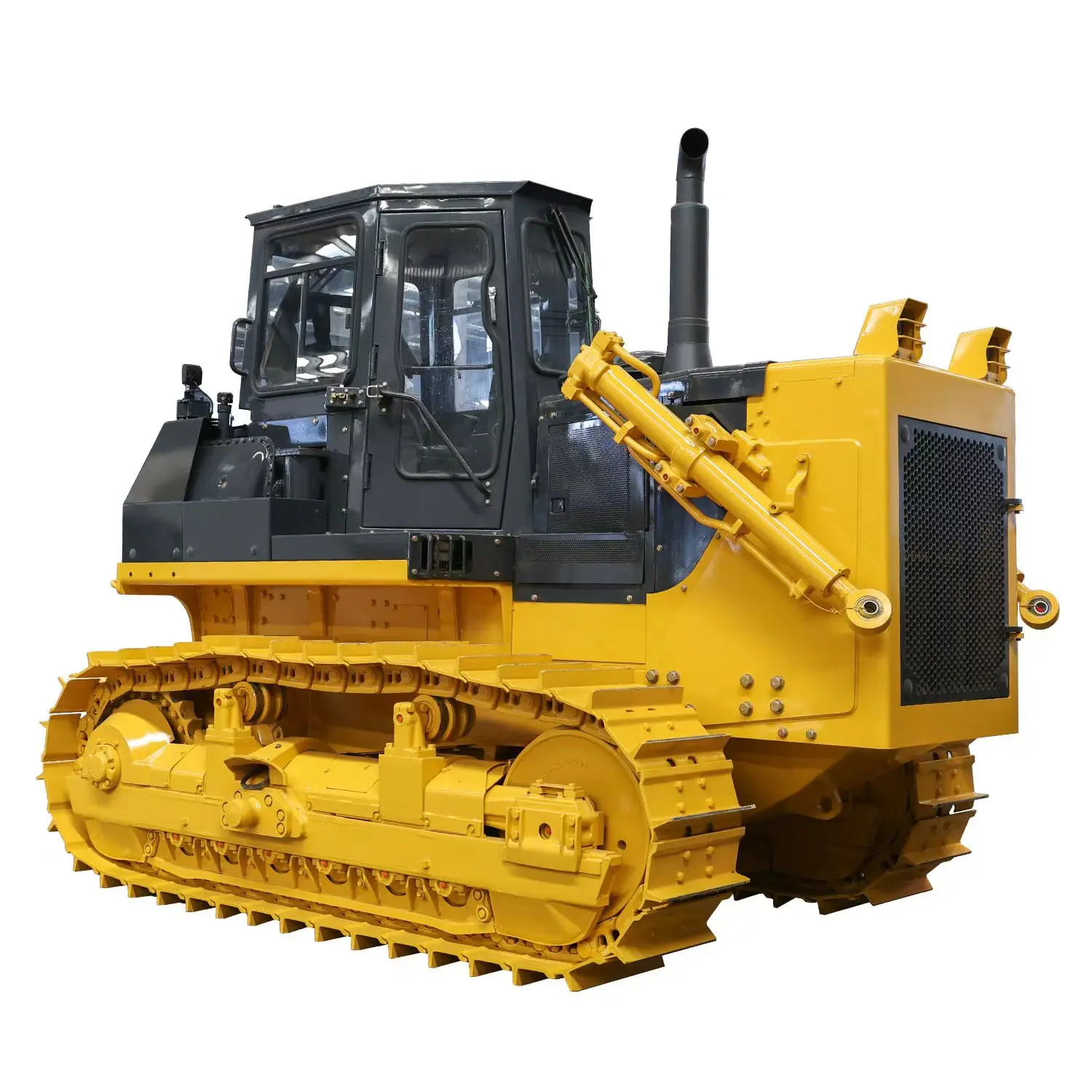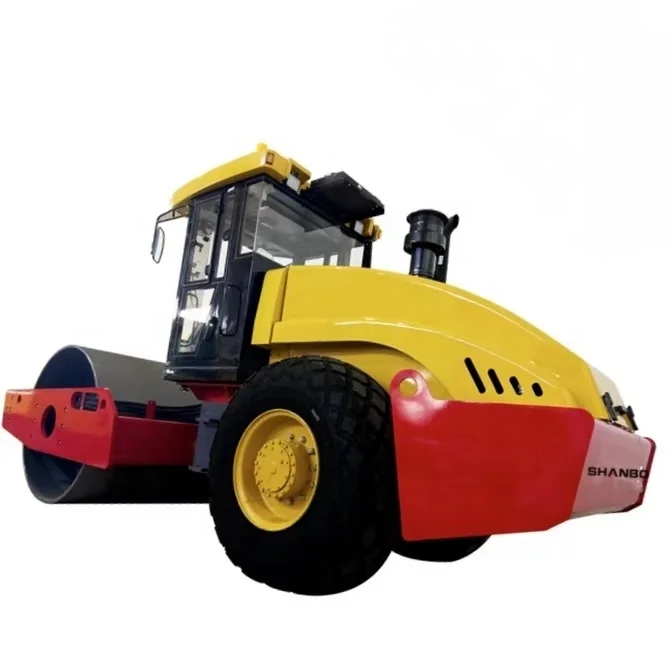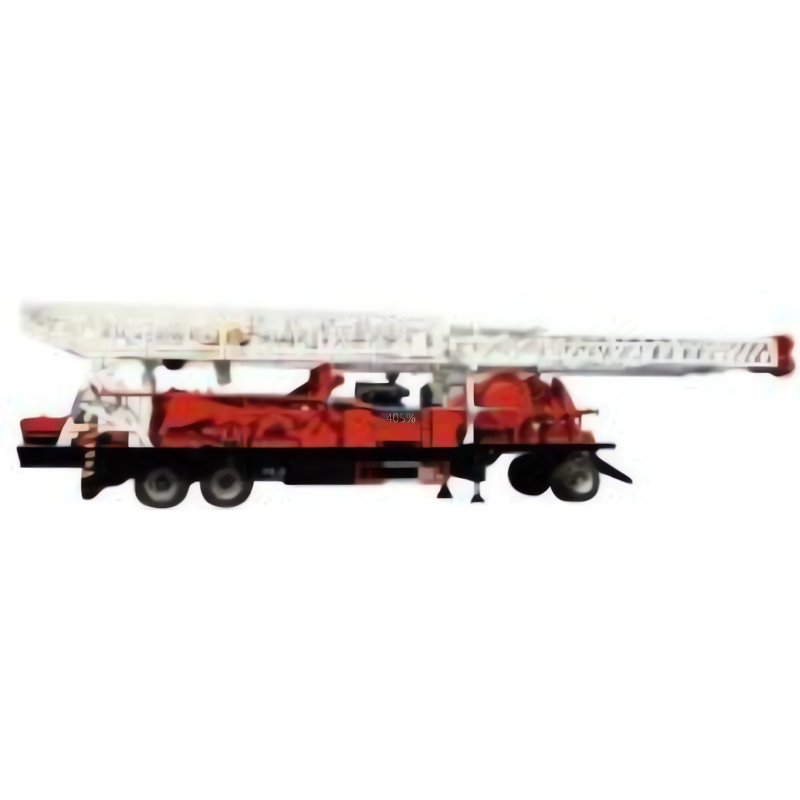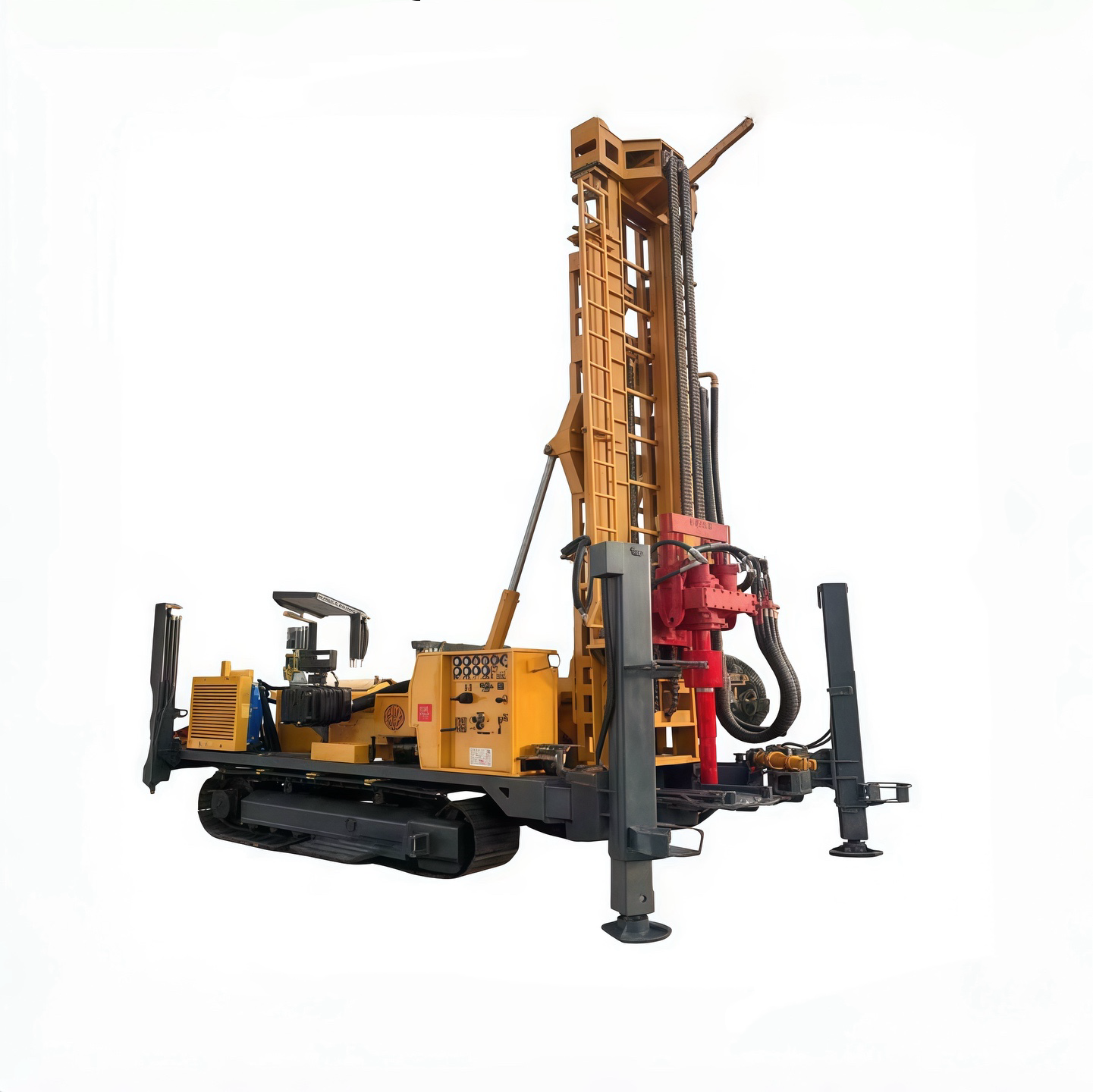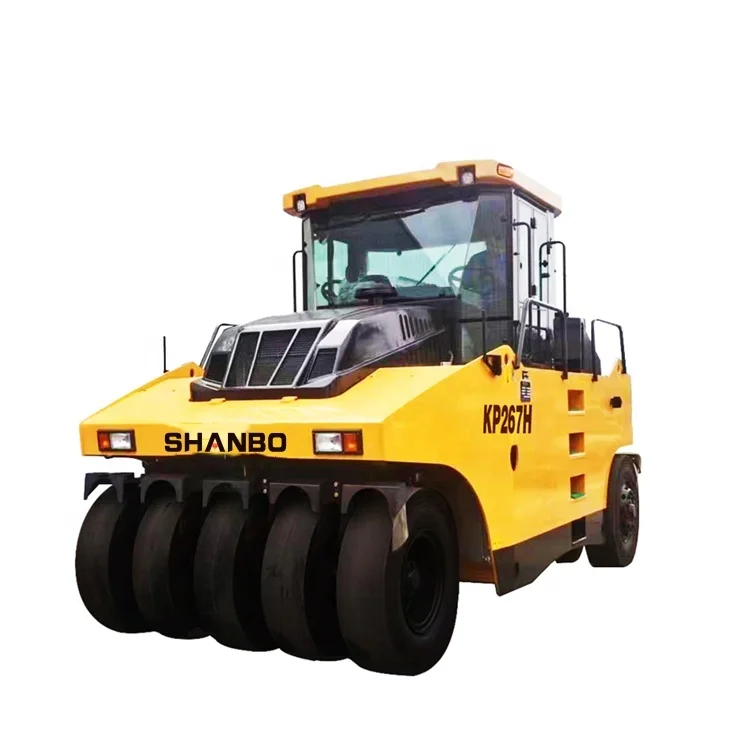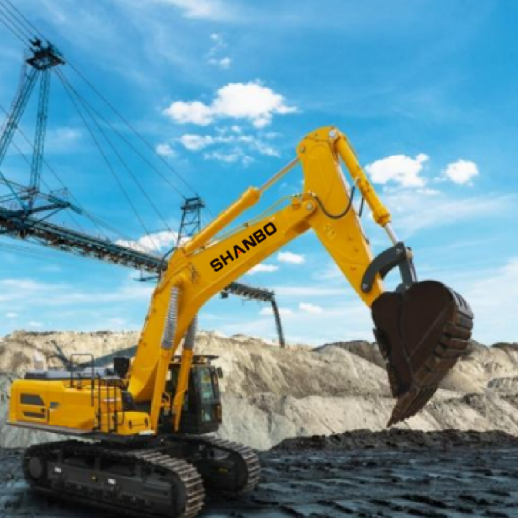أنواع الجرارات: من النماذج المجنزرة إلى نماذج العجلات
تُعتبر الجرارات (Bulldozers) من المعدات الثقيلة الرمزية في صناعات البناء والتعدين وتطوير الأراضي. صُمّمت هذه الآلات القوية أساسًا لدفع كميات كبيرة من التربة أو الرمال أو الحطام أو مواد أخرى أثناء عمليات نقل التربة. تحتوي الجرارات عادةً على لوحة معدنية عريضة في المقدمة تُعرف باسم (Blade)، كما تحتوي غالبًا على أداة خلفية (Ripper) لكسر الأرض الصلبة، وتلعب الجرارات دورًا حيويًا في إعداد المواقع وبناء الطرق وأعمال الهدم.
من الضروري لمحترفي هذه المجالات فهم الأنواع المختلفة من الجرارات (Bulldozers)، حيث إن كل نوع منها يمتلك مزايا فريدة تتناسب مع أنواع مختلفة من التضاريس ومقاييس المشاريع واحتياجات التشغيل. يتناول هذا المقال الفئات الرئيسية، بدءًا من النماذج التقليدية ذات الزحافات (Crawler) وصولًا إلى الإصدارات الأكثر حركة على عجلات (Wheel Dozers)، ويشرح ميزاتها وفوائدها وتطبيقاتها.
الجرارات ذات الزحافات (Crawler Bulldozers): الأحصنة القوية في التضاريس الوعرة
تُعتبر الجرارات الزحّافة، والمعروفة أيضًا باسم الجرارات ذات الزحافات، الشكل الأكثر شيوعًا وتنوعًا من هذه الآلات. والميزة المُميزة لها هي نظام الزحافات المستمر، المشابه لذلك الموجود في الدبابات، والذي يقوم بتوزيع وزن الآلة على مساحة سطح أكبر. وقد تم تصميمها بحيث تمنع الغوص في الأرض الناعمة أو الوعرة، مما يجعلها مثالية للعمل في التضاريس الصعبة.
في قلب الجرافة الزحّافة يوجد هيكلها السفلي، المكوّن من زحافات فولاذية مدعومة ببكرات وعجلات توجيه وتروس. وتوفّر هذه الزحافات قدرة تصادم واستقرار استثنائية، مما يمكّن الآلة من التنقّل بسهولة على المنحدرات الشديدة أو الحقول الطينية أو المناطق الصخرية الوعرة. والشفرة، التي تكون عادةً مستقيمة أو مائلة، يمكن التحكم بها هيدروليكيًا لدفع المواد أو تسوية أو قطع. كما تحتوي العديد من الموديلات أيضًا على مُفكّك خلفي، وهو أداة تشبه المخلب تخترق التربة أو الصخور المتراصة، مما يسهّل عملية الحفر.
تتمثل إحدى المزايا الأساسية لجرافات الدفع ذات الزحافة في قوتها الدافعة المتفوقة. تتيح لها مركز الثقل المنخفض والقاعدة العريضة للزحافات التحمل قوة دفع كبيرة دون أن تنقلب، وهو أمر بالغ الأهمية في المهام الشاقة مثل إزالة الغابات، وتسوية الأراضي الزراعية، أو بناء السدود. وفي عمليات التعدين، تُعد هذه الجرافات ضرورية لإزالة طبقات التربة العلوية وتشكيل الكومات. كما أن قدرتها على العمل على المنحدرات التي تصل إلى 45 درجة أو أكثر تجعلها مناسبة للمشاريع على المنحدرات التي يصعب على المركبات الأخرى العمل فيها.
ومع ذلك، فإن نماذج الجرارات الزاحفة ليست خالية من العيوب. يؤدي نظام الزحف الخاص بها إلى سرعات سفر بطيئة، حيث تصل عادةً إلى الحد الأقصى من 5 إلى 8 أميال في الساعة، مما قد يحد من الإنتاجية في المواقع الكبيرة والمسطحة التي تتطلب إعادة التموضع بشكل متكرر. كما تسبب الزحافات اضطراباً أكبر في الأرض، مما قد يؤدي إلى التآكل أو التلف على الأسطح الحساسة مثل الطرق الممهدة. يعد الصيانة عاملاً آخر يجب أخذه بعين الاعتبار؛ حيث تتآكل الزحافات ومكونات الهيكل السفلي بشكل أسرع في البيئات الخشنة، مما يستدعي فحوصات منتظمة واستبدال القطع لتجنب توقف التشغيل.
تمتد تطبيقات الجرارات الزاحفة على نطاق واسع. في قطاع البناء، تقوم بتجهيز المواقع عن طريق تسوية الأرض وإزالة الحطام. وتستخدمها عمليات الغابات لإنشاء خطوط التوقف عن انتشار الحرائق والطرق المؤدية إلى المناطق النائية. أثناء التعافي من الكوارث، مثل الفloods أو الزلازل، تقوم هذه الآلات بإزالة الحطام واستعادة الوصول. وتضمن متانتها أنها تظل أداة أساسية في الصناعات التي تتطلب الاعتمادية بدل السرعة.
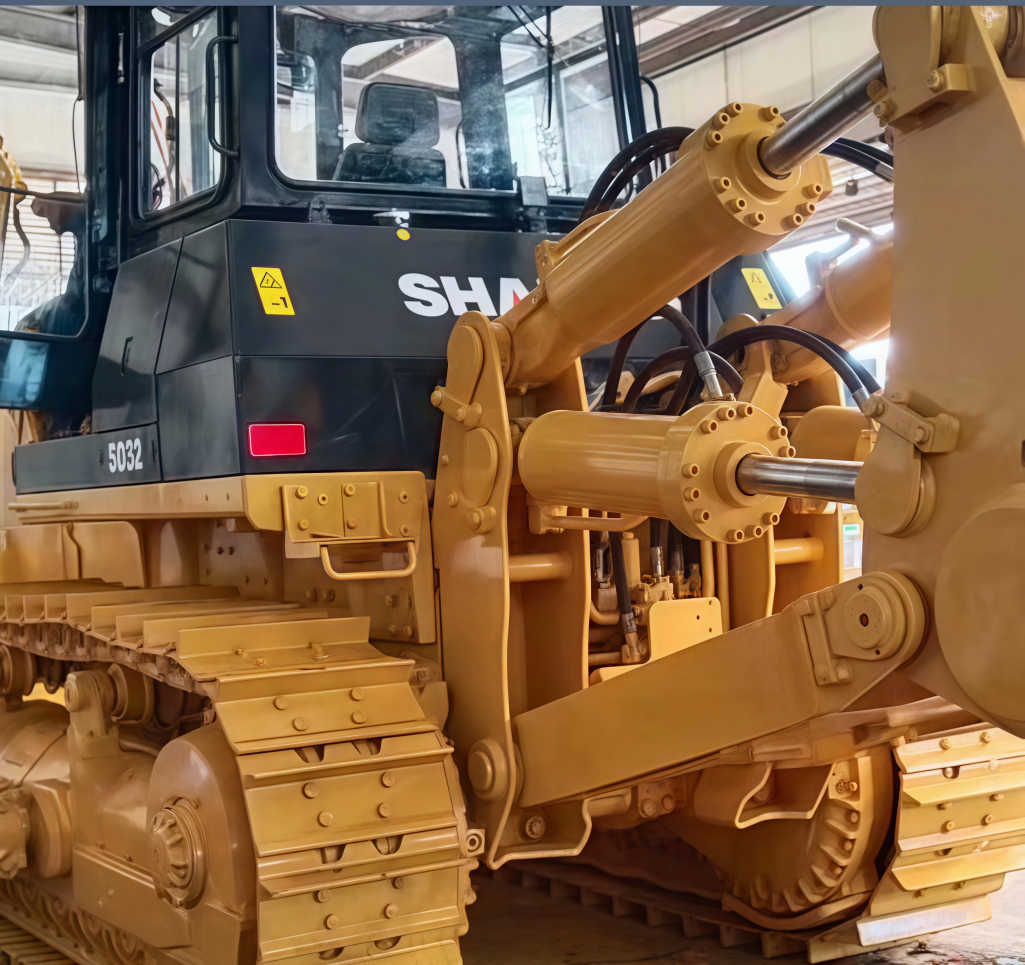
جرافات ذات عجلات: السرعة والرشاقة على الأسطح الصلبة
على عكس الجرارات ذات الزحافات، تحتوي الجرارات ذات العجلات على إطارات مطاطية مثبتة على هيكل عجلات، مما يوفر مجموعة مختلفة من القدرات. يركز هذا التصميم على الحركة والمرونة على الأسطح الأكثر صلابة واستقرارًا، مما يجعلها خيارًا شائعًا للمشاريع التي يكون فيها الحركة السريعة أمرًا بالغ الأهمية.
عادةً ما يتضمن هيكل الجرافة ذات العجلات أربعة إطارات كبيرة وثقيلة توفر ركوبًا أكثر نعومة وارتفاعًا أكبر من الأرض. تسمح هذه الإعدادية بسرعات سفر أسرع، غالبًا ما تصل إلى 15-25 ميلًا في الساعة، مما habilita المشغلين على تغطية مساحات أكبر بكفاءة. نظام الشفرة يشبه ذلك الموجود في الجرافات الزاحفة - قابل للتعديل للدفع أو التوزيع أو التسوية - ولكن الآلة ككل أخف وزنًا وأكثر قدرة على المناورة، مما يقلل من استهلاك الوقود في بعض الظروف.
تشمل مزايا جرارات الدفع ذات العجلات مرونتها وتأثيرها المحدود على سطح الأرض. وعلى الأسطح الصلبة مثل التربة المكثفة والطرق الحصوية أو مواقع البناء الحضرية، يمكنها الدوران بسرعة والتنقل في المساحات الضيقة دون الحاجة إلى استخدام سلاسل. ويجعلها ذلك خيارًا مثاليًا لتجميع المواد في المحاجر أو صيانة مكبات النفايات أو إجراء عمليات تسوية نهائية تتطلب دقة. كما تسهم سرعتها أيضًا في الاستجابة السريعة في البيئات المتغيرة، مثل إزالة الثلج في فصل الشتاء أو تنظيف الحطام في حالات الطوارئ.
وبالرغم من هذه الفوائد، فإن لجرارات الدفع ذات العجلات بعض القيود. فهي تفتقر إلى قوة الجر التي توفرها السلاسل، ولذلك تؤدي أداءً ضعيفًا على الأسطح الناعمة أو الرطبة أو المرتفعة ذات الميل الشديد، حيث يمكن أن تنزلق العجلات أو تغوص فيها. كما يمكن أن تصبح الاستقرار مشكلة على الأسطح غير المستوية، مما يزيد من خطر الانقلاب أثناء عمليات الدفع العنيفة. علاوة على ذلك، تتآكل الإطارات بسرعة أكبر على المواد الخشنة، ويمكن أن تؤدي الثقوب إلى توقف العمليات، على الرغم من استخدام العديد من الموديلات إطارات مملوءة بال espuma أو إطارات صلبة لتقليل هذه المشكلة.
تتميز جرارات الأفق الدوارة بأدائها في التطبيقات التي تتطلب نقلًا متكررًا. وفي مجال التعدين، تقوم بتفريغ الفحم أو خامات المعادن بكفاءة. وتستخدمها فرق إنشاء الطرق في نشر مواد التجميع وضغط طبقات التربة. وتستفيد عمليات المكبات من قدرتها على ضغط طبقات النفايات دون إزاحة كبيرة للتربة. وبشكل عام، تكمل هذه الجرارات نماذج الزحف من خلال سد الفجوة من حيث السرعة والتكيف.
أنواع الجرارات الهجينة والمخصصة
بينما تسيطر الجرارات من النوع الزاحف والدوارة على السوق، فإن الجرارات الهجينة والمتخصصة تلبي احتياجات محددة، حيث تجمع بين الميزات أو تتكيف مع البيئات الفريدة. وتوسع هذه الأنواع من الجرارات نطاق استخدام الماكينات ليمتد beyond beyond العمليات القياسية.
تجمع جرارات الدفع الهجين بين عناصر التصاميم الزاحفة والعجلات، وغالبًا ما تحتوي على إطارات مفصلية للحصول على نصف دوران أفضل أو أنظمة هيدروليكية متقدمة متعددة الوظائف. تحتوي بعض النماذج على نُظُم نقل حركة كهربائية أو ديزل-كهربائية لتقليل الانبعاثات وجعل التشغيل أكثر هدوءًا، مما يجعلها جذابة للمشاريع الحضرية أو تلك الحساسة من الناحية البيئية. تهدف هذه النماذج إلى تحقيق توازن بين الجر والحركة، مما يجعلها مناسبة للتضاريس المختلطة مثل المناطق الانتقالية في المشاريع التنموية الكبيرة.
تمثل الجرارات الصغيرة فئة مصغرة، وهي متوفرة بتكوينات زاحفة وعجلات. هذه الآلات المدمجة، التي يقل وزنها عادةً عن 10 أطنان، مصممة للاستخدام في المساحات الضيقة مثل تنسيق الحدائق السكنية، أو حفر الخنادق الخاصة بالمرافق، أو الهدم الداخلي. توفر الجرارات الزاحفة الصغيرة استقراراً في الحدائق أو المناطق الغابية، في حين تتيح النماذج ذات العجلات نقلًا سريعًا بواسطة المقطورات. تتعامل الشفرات والكسارات الصغيرة الخاصة بها مع المهام بدقة دون إحداث إرباك في الموقع.
تشمل الأنواع المتخصصة جرارات التسوية المستخدمة في المستنقعات، وهي مبنية على زحافات مع مسارات واسعة جدًا تسمح لها بالطفو على الأراضي الرطبة، وهي مثالية لإعادة تأهيل الأراضي الرطبة أو تركيب خطوط الأنابيب. وتتميز نماذج مناولة النفايات بمقصورة مغلقة وشفرات مدعمة للاستخدام في المكبات الصحية، كما أنها مقاومة للتآكل الناتج عن الحطام. أما النماذج البرمائية، والمزودة بعوامات، فتعمل في المياه الضحلة لتنظيف القنوات أو التحكم في تآكل السواحل.
تُظهر هذه الجرارات التخصصية تطور الماكينات، حيث تدمج تقنيات مثل الشفرات الموجهة عبر نظام تحديد المواقع العالمي (GPS) للتسوية التلقائية أو نظم الاتصالات عن بعد لمراقبة العمليات عن بُعد. وتعزز هذه الابتكارات الدقة وتقلل من إرهاق المشغل، مما يوسع حدود التصاميم التقليدية.
مقارنة بين جرارات الزحف والجرارات ذات العجلات: اختيار النوع المناسب
عند الاختيار بين جرارات الأدوات الزحافة والعجلات، تلعب عدة عوامل دورًا مهمًا. يأتي التضاريس في المقام الأول: اختر الزحافات عند العمل على الأراضي الناعمة أو الوعرة أو المنحدرة لضمان استقرار لا يُضاهى، بينما تُفضل العجلات على الأسطح المستوية والصلبة حيث تزيد السرعة من الإنتاجية. ويؤثر حجم المشروع على القرار - فالمناطق الكبيرة والوعرة تُفضل فيها الزحافات، بينما تناسب المشاريع الصغيرة في المدن العجلات.
تشمل الاعتبارات المتعلقة بالتكاليف التكلفة الأولية للشراء والصيانة والكفاءة في استهلاك الوقود. غالبًا ما تكون تكاليف الزحافات أعلى في البداية وفي عمليات الإصلاح بسبب السلاسل، لكنها تتفوق من حيث العمر الطويل في الاستخدام الشاق. أما العجلات فتكون عمومًا أرخص في التشغيل على التضاريس المناسبة. ويجب أيضًا أخذ الأثر البيئي بعين الاعتبار؛ إذ تسبب العجلات ضغطًا أقل على التربة، مما يفيد المشاريع الزراعية أو البيئية.
في الممارسة العملية، تعتمد العديد من العمليات على النوعين معًا بشكل متكامل. على سبيل المثال، قد تقوم الزحافات بتجهيز الموقع بشكل خشن، لتتلوها العجلات لإضافة اللمسات النهائية. يُحقق هذا النهج الهجين أقصى قدر من الكفاءة عبر المهام المتنوعة.
الاستنتاج
يرتبط تصنيف الجرارات بشكل كبير بأنظمة هيكلها السفلي، والتي تحدد قدرتها على الحركة والثبات ومدى ملاءمتها للبيئات المختلفة. تتفوق الجرارات ذات الزحافات، بفضل قواعدها المزحافية، في الظروف الوعرة، في حين توفر الجرارات ذات العجلات السرعة والمناورة على الأسطح الملساء. وباستثناء هذه الأنواع الأساسية، فإن هناك اختلافات مثل النماذج الصغيرة والهجينية المتخصصة التي تلبي متطلبات محددة.
من الجرارات ذات الزحافات التي تشق طريقها عبر المناظر الوعرة، إلى النماذج المتنقلة سريعة الحركة على الأراضي الصلبة، تضمن تنوع أنواع الجرارات من شركة شانبو العثور على الآلة المناسبة لكل تحدٍ. إن فهم هذه الاختلافات يعزز اتخاذ قرارات أفضل، مما يؤدي إلى مشاريع أكثر أماناً وكفاءة. ومع تقدم التكنولوجيا، من المتوقع حدوث تحسينات إضافية، لكن المبادئ الأساسية المتعلقة بالقوة والجذب والتنوع ستظل قائمة.
منتجات موصى بها
 أخبار ساخنة
أخبار ساخنة
-
«مُنقذ الماء» حفارات آبار مياه عكسية يصل طولها إلى 200 متر تصل إلى أوزبكستان
2025-03-28
-
ما هي الجرافة؟ كل ما تحتاج لمعرفته
2025-02-18
-
جرافة ذات مسار زحاف مقابل الجرافة: مقارنة من حيث التكلفة والكفاءة والتنوع
2025-11-13
-
داخل مصنع الجرافة: كيف تُبنى الهراسات الحديثة من الألف إلى الياء
2025-11-12
-
كيفية تشغيل حفار العنكبوت بأمان وكفاءة
2025-11-11
-
ما هو الحفار؟ دليل المبتدئين إلى هذه الآلة الإنشائية الضرورية
2025-11-10
